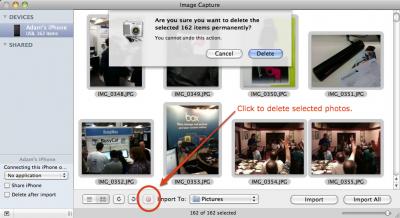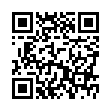Adding Links in Snow Leopard's Mail
Apple Mail in Snow Leopard now has a Command-key shortcut for adding a link to an email.
If you use plain-text email, this will not be helpful at all, but if you send styled email, it's a nice shortcut for adding URLs to your email messages. Simply select the word(s) you want to make into a link, press Command-K, and enter the URL to build into the link.
Submitted by
Lewis
Recent TidBITS Talk Discussions
- Alternatives to MobileMe for syncing calendars between iPad/Mac (1 message)
- Free anti-virus for the Mac (20 messages)
- iTunes 10 syncing iPod Touch 4.1 (2 messages)
- Thoughts about Ping (16 messages)
Published in TidBITS 1033.
Subscribe to our weekly email edition.
- AT&T Makes Eligibility Transfer Process Clearer
- HTTPS Everywhere Enables Easy Encryption
- DealBITS Discount: Save 20% on TextExpander 3
- Looking Inside the iPhone 4
- Google Voice Opens to All Americans
- Change Your Passwords: Email Account Hacking on the Rise
- iOS 4: Essential Early Reading
- Roundup of iPhone 4 Early Reviews
- iBooks 1.1 Adds PDF Support, Runs on All iOS Devices
- TidBITS Watchlist: Notable Software Updates for 28 June 2010
- ExtraBITS for 28 June 2010
Two Ways to Delete Lots of iPhone Photos
Generally speaking, my recommendation is to delete photos from your digital camera manually after you're certain they've been imported into iPhoto. That's easy on every camera I've used, so the peace of mind is worth the small extra step. However, since most photos I take using my iPhone aren't that impressive, I've always let iPhoto delete the photos automatically after import, with no problems.
However, after importing 162 photos and movies from my iPhone today, I accidentally clicked the Keep Photos button in iPhoto, leaving all the already-imported photos on my iPhone. iPhoto would happily hide them from view when importing new photos, but it wouldn't delete them. Needless to say, I didn't want to delete 162 photos one at a time by tapping the trash icon followed by the Delete Photo button - I have better things to do than tap my iPhone 324 times (like write this article!).
I figured out two ways around the problem, one using just the iPhone and another using Image Capture on the Mac.
- To delete the photos on the iPhone in a batch, tap Photos > Camera Roll to view all the photos, and then tap the Share button. Next, tap each photo in turn to select it, and once you've selected all of them, tap the Delete button. This halves the number of taps necessary, but since you must still tap each photo once in the selection step, it's not ideal.
- To delete all the photos in one fell swoop, connect your iPhone to your Mac, launch Image Capture (usually in the Applications folder), select the iPhone in the sidebar if necessary, choose Edit > Select All (Command-A), and then click the button with the little red circle with a slash through it. Image Capture prompts you to make sure you want to delete all the photos; click Delete.

Once again, it's a little surprising that there's a capability of the age-old Image Capture program that Apple hasn't yet built into iPhoto, but there it is.
 SYNC YOUR PHONE with The Missing Sync: Sync your calendar,
SYNC YOUR PHONE with The Missing Sync: Sync your calendar,address book, music, photos and much more between your phone
and Mac. Supports ANDROID, BLACKBERRY, PALM PRE and many
other phones. <http://www.markspace.com/bits>
And (if it's like Aperture) it probably wouldn't work unless you emptied the trash first anyway.
There is an app in the AppStore called 'Roll Swap'. It SOMEHOW swaps your ENTIRE camera roll for a fresh one and allows you to save pics to the fresh one and still swap back to the original via the app at anytime later. And it does all this in the blink of an eye impressively.
Now the best part is it gives you more than just one roll to swap out with. It gives you 4 rolls. However there is a branch off from here. There is a pro version that gives you 12 rolls instead and allows you to delete any given roll from within the app and adds password protection and even launch protection. So with the pro version it's a very speedy process and I think it's worth it for all that you get.
However if you just opt for the regular version, then you can accomplish the roll deletion simply by deleting the app from your device and any rolls in it are gone.

